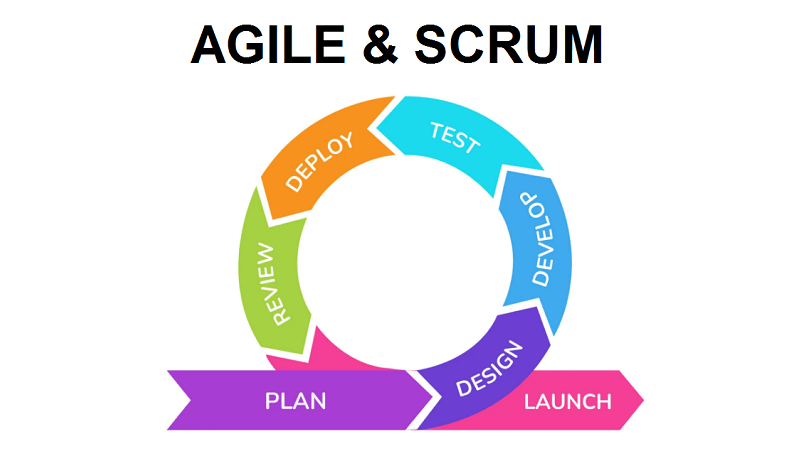
Agile and Scrum are terms often used interchangeably, but they represent distinct concepts within the realm of project management and software development. Understanding the nuances between Agile and Scrum is essential for professionals seeking to implement effective project management methodologies. In this article, we’ll delve into the major differences between Scrum and Agile, shedding light on their unique characteristics and how they complement each other.
What is Agile Methodology and Scrum Framework?
Agile Methodology:
Agile is a broad and flexible approach to project management that emphasizes iterative development, collaboration, and customer feedback. It was introduced as a response to traditional, rigid project management methodologies, aiming to provide a more adaptive and responsive framework. Agile values individuals and interactions, working solutions, and customer collaboration over processes and tools. It is based on the Agile Manifesto, which outlines four key values and twelve principles that guide Agile development.
Scrum Framework:
Scrum, on the other hand, is a specific framework falling under the umbrella of Agile methodologies. It provides a structured yet flexible approach to managing complex projects. Scrum introduces specific roles, events, and artifacts that define how teams work together to deliver incremental value. Key components of Scrum include Product Backlog, Sprint Backlog, Daily Stand-ups, Sprint Review, and Sprint Retrospective. The Scrum framework allows teams to organize their work in time-boxed iterations called sprints, typically lasting two to four weeks.
Major Differences Between Scrum and Agile
- Scope and Applicability:
- Agile: Agile is a broader concept and mindset encompassing various methodologies, including Scrum. It applies to various industries and project types beyond software development.
- Scrum: Scrum is a specific framework within the Agile umbrella, primarily designed for managing complex software development projects. While it can be adapted for other purposes, its origins and strengths lie in software development.
- Flexibility vs. Structure:
- Agile: Agile is more of a philosophy or mindset that emphasizes adaptability and continuous improvement. It provides guidelines and values, allowing teams to tailor their processes to their specific needs.
- Scrum: Scrum is a more prescriptive framework with defined roles, events, and artifacts. It offers a structured approach, making it suitable for teams seeking a well-defined path to manage their projects.
- Roles and Responsibilities:
- Agile: Agile doesn’t prescribe specific roles but emphasizes collaboration among cross-functional teams. Team members are encouraged to collaborate closely and take collective responsibility for the project’s success.
- Scrum: Scrum introduces specific roles such as Scrum Master, Product Owner, and Development Team members. Each role has well-defined responsibilities, providing clarity on who does what within the framework.
- Planning and Execution:
- Agile: Agile focuses on delivering incremental value continuously. It allows for changes in project scope and requirements throughout the development process.
- Scrum: Scrum divides the project into fixed-length iterations (sprints) and emphasizes delivering a potentially shippable product increment at the end of each sprint. Changes to the sprint scope are discouraged once it begins, promoting stability and focus.
Conclusion:
In essence, while Agile provides a broader philosophy and set of values, Scrum offers a specific framework for implementing those values in a structured manner. Understanding the major differences between Scrum and Agile is crucial for organizations and teams looking to adopt effective project management methodologies. Depending on the nature of the project and the team’s preferences, either Agile or Scrum or a combination of both, maybe the ideal choice for achieving successful and collaborative outcomes.
You might also like our TUTEZONE section which contains exclusive tutorials on how you can make your life simpler using technology.




